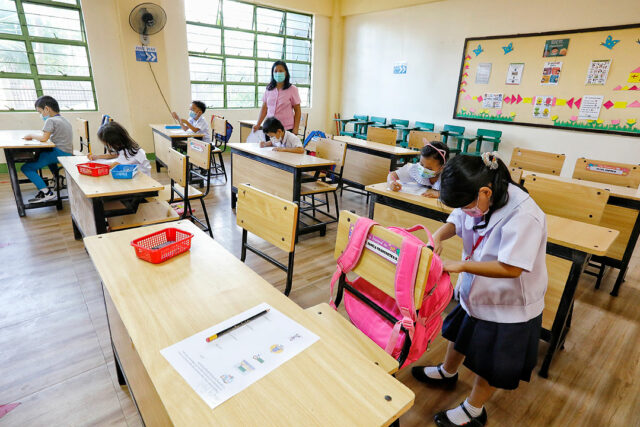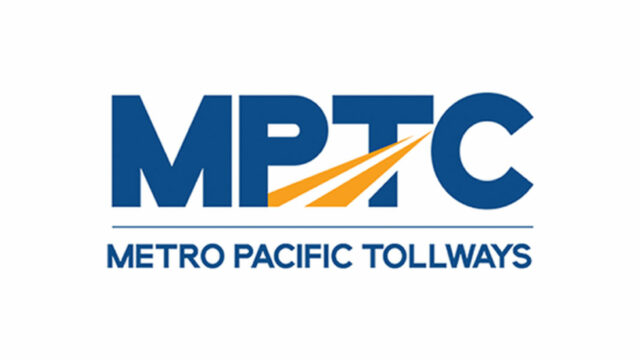By Bjorn Biel M. Beltran, Special Features and Content Assistant Editor
Early this year, President Ferdinand R. Marcos, Jr. signed into law the Ease of Paying Taxes (EOPT) Act, or Republic Act No. (RA) 11976 in a bid to bring the Philippine tax administration up to date in the modern era and further strengthen taxpayer rights.
Previously tagged as a priority for his administration, RA 11976 aims to streamline taxation processes and minimize the burden on taxpayers, encouraging them to comply with the tax system and thus increasing the country’s revenue collection. The boost in government revenues provided by the EOPT Act will support the government’s 8-Point Socioeconomic Agenda to enhance economic and social development.
“After the comprehensive amendments to tax policy introduced by the previous administration, we now focus our sights on tax administration with the passage of the Ease of Paying Taxes Act. Recognizing the importance of how the government collects taxes, this measure solidifies our commitment to our countrymen towards a dynamic and efficient tax administration which is responsive to the needs of our taxpayers, both individuals and those who are doing business, adapts to the changing times, and ultimately supports our recovery and growth objectives,” the President said in a statement.
Senen M. Quizon, Principal of Tax & Corporate Services at Deloitte Philippines, told BusinessWorld that the EOPT Act is “a significant step forward in creating a more taxpayer-friendly tax environment. It eases tax compliance by streamlining existing registration processes and allows taxpayers to file tax returns and make tax payments online or manually, anywhere.”
“The EOPT clearly sets the period for the BIR (Bureau of Internal Revenue) to act on claims for refunds and remedies available to taxpayers, which will facilitate the processing for VAT (value-added tax) refunds and erroneously paid taxes. The EOPT also ensures that the BIR will continue to use technology to further ease tax compliance burden, to streamline processes, and to develop an ease of paying taxes and digitalization road map,” he added.
Maria Carmela M. Peralta, Head of Tax at KPMG in the Philippines (R.G. Manabat & Co.), recognized the potential of the new law in enhancing taxpayer convenience and ensure ease of compliance.
“Ease of compliance could be brought about by a number of ways which include streamlining of tax processes, adoption of simplified tax returns, reduction of documentary requirements, and digitalization of the BIR,” she said.
“Hopefully, the BIR will adopt these measures, which will be most welcome given the number of pages tax returns currently have, the long list of documentary requirements for claiming refunds for example, and the time it takes for example in enrolling in the BIR’s electronic filing and payment system (eFPS) or in correcting errors in the taxpayer’s data in the eFPS.”
So, what will the law change?
In order to create a tax system that is responsive and tailored to the needs of each segment, the new law will divide taxpayers into four categories based on their gross sales: micro, small, medium, and large. Internal revenue tax payment and return filing will also be simplified via electronic and manual methods like authorized software providers and agent banks.
Mr. Quizon pointed out that the EOPT did not introduce any significant change in terms of tax compliance obligation among the different categories of taxpayers. “In fact, with the veto of exemption of micro taxpayers from obligation to withhold creditable taxes, the only benefits that are available to micro and small taxpayers are reduced number of income tax return pages from four to two pages, and reduced rate for civil penalties,” he said.
“However, given the mandate under EOPT for the BIR to develop programs and projects to ensure ease of compliance of taxpayers with tax laws and regulations with priority being given to micro and small taxpayers, we expect that the BIR will design and implement programs tailored to address the challenges that taxpayers in different segments face in complying with their tax obligations.”
Such programs would likely be part of the BIR’s plans in developing the Ease of Paying Taxes and Digitalization Roadmap in order to support and help taxpayers by digitizing its services, lowering the amount of documentation needed, and expediting tax procedures. Changing the income tax return (ITR) to only have two pages instead of four was part of this streamlining process.
“The change in the parameter when classifying large taxpayers from amount of tax paid for income tax, value-added tax, excise, corporate income tax, and withholding tax to gross sales with threshold set at P1 billion means that existing large taxpayers that are unable to meet the new criteria based on gross sales may have to be delisted as large taxpayer,” Mr. Quizon added.
“The reclassification of existing large taxpayers with gross sales of less than P1 billion would have an impact on the tax obligations imposed upon them as large taxpayers, such as the requirement to issue electronic receipts or sales invoices and implement electronic invoicing system mandated under Section 237 of the Tax Code and required to be complied with by large taxpayers, exporters, and those engaged in commerce.”
Additionally, to promote the switch to electronic payment channels, the option to pay internal revenue taxes to the city or municipal treasurer who has jurisdiction over the taxpayer was removed. This move also guarantees that taxpayers who do not reside in the Philippines can still access tax registration facilities.
The law harmonizes the regulations for how sales of goods and services are treated for value-added tax (VAT), necessitating a sales invoice for each. The mandatory issuance of receipts for each sale and transfer of goods and services will be increased from P100 to P500.
“Based on the draft regulations circulated by the BIR for its public consultation in February 2024, taxpayers mandated to file tax returns and pay the tax due electronically will be subject to administrative penalties if they have resorted to manual filing and payment. Nonetheless, they will not be imposed with the 25% surcharge for filing at the wrong venue. RA No. 11976 has removed this surcharge,” Ms. Peralta noted.
“Another change is that filing can be made anywhere. Filings are no longer required to be made only with the proper BIR offices having jurisdiction over the taxpayers or with the authorized agent banks within their jurisdictions. As mentioned above, the law has removed the 25% surcharge for filing at the wrong venue. However, it will be prudent for taxpayers to await the issuance of the revenue regulations.”
Ms. Peralta explained that “the major change in the invoice system is that for VAT purposes, sellers of services will report the VAT based on their gross sales. Before RA No. 11796, sellers of services report the VAT on their sales based on collection. Now sellers, of goods and services will report based on gross sales and will be required to issue VAT invoices. These VAT invoices will be the basis for input VAT credits to be claimed by their customers.”
“This change will simplify the preparation of VAT returns. Sellers of services do not need to monitor collections for the purposes of VAT reporting. On the other hand, the purchasers of services do not need to chase the issuance to them of the VAT official receipts for purposes of claiming input VAT credits. However, sellers could have cash flow concerns especially if the amounts involved are significant.”
Based on a number of factors, including the quantity of the VAT refund claim, the tax compliance history, and the frequency of filing the claim, the VAT refunds will be recategorized into low-, medium-, and high-risk claims.
To expedite VAT refunds, an invoicing mechanism will also be put in place. The act also gives the BIR 180 days to handle general refund requests for taxes that were incorrectly or unlawfully collected.
Mr. Quizon said that denials on VAT refund claims are caused mostly by non-compliance with invoicing requirements; and under EOPT, there now will be a uniform system of documenting sales of goods and services, with the invoice becoming the sole basis of output tax liability of sellers, and input tax claim of buyers.
“This will expedite the process of claiming VAT refunds since the same rules and verification process will now apply for both VAT on sale of goods and services with the harmonization of the rules on recognition of input and output VAT on sale of goods and services, and the adoption of invoice as the sole basis for substantiating input tax under EOPT,” he said.
“Moreover, the reform introduced in the EOPT on the invoicing system, such as the removal of ‘business style’ in the invoice, will make it easier for taxpayers to comply with the requirement in substantiating their input tax for VAT purposes.”
Towards a more efficient, more robust tax system
Mr. Quizon noted that EOPT provides the necessary legislative mandate to further boost the BIR’s digitalization initiatives, building on the 10-year Digital Transformation Roadmap already developed by the BIR, which identifies four pillars designed to strengthen the tax organization; modernize the digital backbone of the BIR; enhance its policies, governance, and standards; and elevate taxpayer’s experience and innovate BIR services.
“The tax administration of the future will be heavily dependent on information technology. The EOPT ensures that the BIR is positioned to harness technology for the further simplification of tax compliance and the streamlining of processes. We anticipate that the focus for the future will be acquiring and using data to improve efficiency in tax administration and collection,” he said.
There are still concerns, however. Ms. Peralta pointed out that while the EOPT will help make taxation more efficient and much easier for taxpayers, there are still questions that could need answering. One is the manner for classifying taxpayers, as while the law itself provides for the gross sales as the criterion for classifying taxpayers, it does not provide guidance or the requirements for determining the gross sales or for the process of notifying taxpayers of their classification.
“Another one is on the withholding taxes. The law states that the obligation to withhold arises at the time the income has become payable. Without clear guidelines from the BIR, there could be timing differences between the reporting by the seller of the income for income tax purposes and the time of withholding by the buyer and claiming of expenses. Such differences could lead to scrutiny by the BIR,” she said.
“Another area of concern is the VAT refunds. It seems that the law leaves it to the BIR to determine which claims are low-, medium-, or high-risk claims. Given the statutory construction rule that refunds are construed strictly against the taxpayer, the BIR might not have enough flexibility in classifying low-risk claims and this might not improve the refund process to give the taxpayer convenience.”
Ms. Peralta emphasized that taxpayers should monitor the issuance of the revenue regulations implementing the law to gain a better understanding of such matters.
Mr. Quizon echoed the sentiment: “Taxpayers should review their existing transactions, agreements/contracts and identify areas that will be affected by changes introduced by EOPT. Existing compliance process must be reviewed to ensure that the procedures adopted by taxpayers are aligned with the requirements of the new law.”
“Employees who do compliance work must undergo compliance training to ensure that they understand the requirements of the law and that the company is not at risk for non-compliance. Taxpayers using cash register machine (CRM) or point-of-sale (POS) machine, as well as computerized accounting systems affected by the change in invoicing requirements, must be ready to modify their system to ensure they are compliant and can operate properly upon effectivity of the law.”












